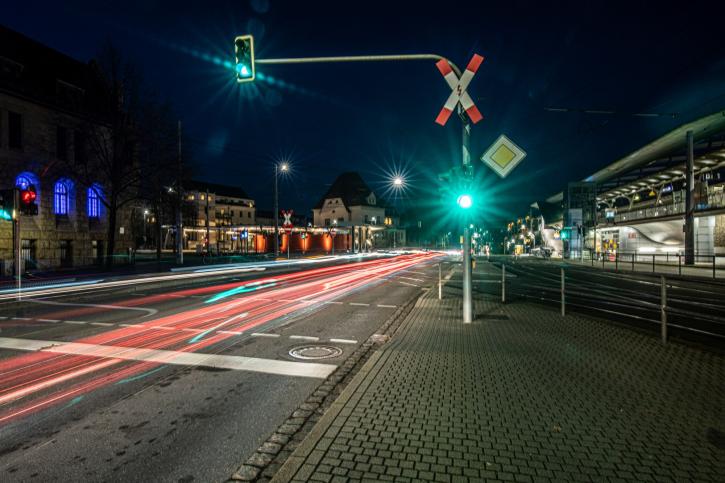
With the help of imaging sensor technology and machine learning, pedestrian traffic lights are to intelligently optimize the needs of all road users in the future. The technology required for this is currently out to tender and is to be retrofitted to some traffic lights in the city of Jena by the end of 2024.
Pedestrian traffic lights are often located between major traffic junctions on busy main roads in Jena. They allow pedestrians and cyclists to cross these busy routes safely by stopping traffic on the road for a certain period of time at the push of a button.
With this approach, the priority of road traffic is interrupted on demand - usually without regard to traffic flow and appropriateness. In practice, this often leads to the behavior of the traffic light system being perceived as a disturbance on its own path and is really not intelligent. With the help of artificial intelligence (AI), the traffic situation is now actually to be interpreted and implemented in a rule-based traffic light control system.
What is the aim of this?
The aim is to recognize the "inferior" road user and to distribute the limited clearance times more fairly by, for example, extending clearance times when a large crowd or very slow participants are approaching. In future, traffic lights will also be able to react more quickly to lower traffic density and reduce waiting times for those crossing.
"The introduction of imaging technology and machine learning at our pedestrian traffic lights is a step towards safer roads and more efficient traffic," says Matthias Weitsch, Head of Electrical Engineering and Energy Management at Kommunalservice Jena (KSJ). "Our aim is to improve comfort for pedestrians and cyclists, especially in the city center, while at the same time keeping traffic flowing to reduce traffic-related emissions."
Nobody has to worry about their identity because the data from the thermal imaging cameras is analyzed and classified on site in real time. The images do not leave the device and are discarded immediately after analysis. The new technology will be used in stages at 15 pedestrian traffic lights and 6 other junctions in Jena where there are high levels of conflict. The KSJ plans to put the first intelligent pedestrian lights into operation by the end of 2024 in order to gain experience with the new system. The project is funded according to the Rili DKV Digitalization of Municipal Transport Systems of the Federal Ministry for Digital and Transport Affairs.
 Deutsch
Deutsch English
English